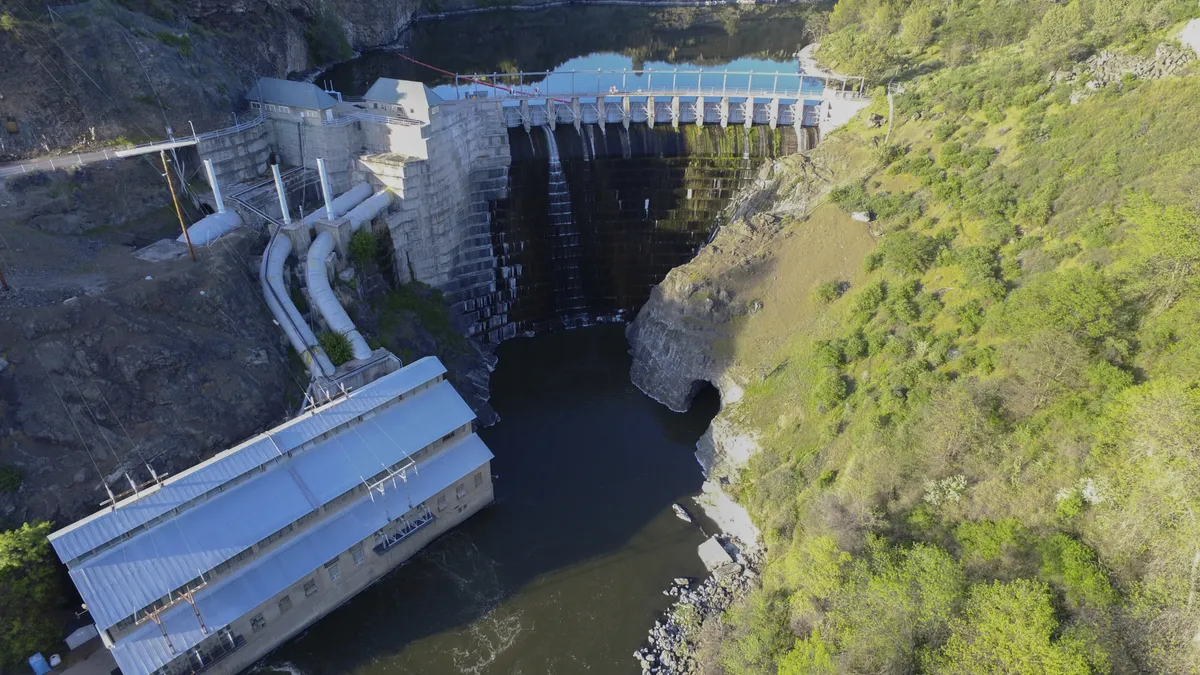Dive Brief:
- Total construction starts jumped 19% in March to a seasonally adjusted annual rate of $1.09 trillion, according to Dodge Construction Network. The reading has now posted two consecutive months of gains, largely due to strong activity in the manufacturing sector, after a massive dropoff to start the year in January.
- For the first three months of the year, residential starts dropped 29%, while starts in nonresidential — such as commercial, institutional and manufacturing — and nonbuilding — such as highways, dams and power plants — increased 6% and 12%, respectively. During March, nonresidential starts rose 33%, nonbuilding starts increased 17% and residential starts climbed 5%.
- “Several large manufacturing projects are breaking ground, pushing nonresidential buildings higher, while a nascent recovery in single-family starts has been supporting residential growth,” said Richard Branch, Dodge chief economist. Nevertheless, starts are likely to erode as the year progresses, he said, as seen by the declining trend in the Dodge Momentum Index, which tracks projects entering the earliest stages of planning.
Dive Insight:
Nonbuilding construction starts, which include infrastructure projects, gained 17% in March to a seasonally adjusted rate of $263 billion. Environmental public works jumped 35%, utility and gas plants improved 16% and highway and bridge starts climbed 13%, according to the report.
The largest nonbuilding projects to break ground in March included:
- The $606 million I-35 Capital Express North Lanes in Austin, Texas.
- The $445 million Klamath River Renewal Project in Oregon.
- The $375 million Atrisco Solar Farm in Rio Rancho, New Mexico.
Meanwhile, nonresidential building starts increased 33% in March to a seasonally adjusted rate of $492 billion, predominantly led by manufacturing projects. Without these projects, total nonresidential starts would have inched up about 3%, according to the report.
Commercial starts, such as retail, warehouse, office, garage and hotel, rose 28%, while institutional starts improved 11% due to strong activity in the healthcare sector. The largest nonresidential building projects to break ground in March included:
- The $5.5 billion Hyundai EV plant in Ellabell, Georgia.
- The $3 billion Panasonic Energy North America Battery manufacturing plant in De Soto, Kansas.
- The $780 million third phase of the BASF MDI chemical plant in Geismar, Louisiana.
Residential building starts increased 5% in March to a seasonally adjusted rate of $335 billion. Single-family starts inched up 4%, while multifamily starts rose 8%, according to the report. The largest multifamily structures to break ground in March include:
- A $400 million mixed-use project in Jamaica, New York.
- The $268 million Knox mixed-use development in Dallas, Texas.
- The $225 million Chestnut Commons Affordable Housing project in Cypress Hills, New York.
Shaky indicators linger
Starts are likely to lose momentum as the year goes on, especially since construction activity has yet to feel the impact of tightening financial conditions in the wake of the failure of Silicon Valley Bank and Signature Bank, said Branch.
The Dodge Momentum Index, a benchmark that measures nonresidential building planning, dropped 8.6% in March due to banking insecurity. The index typically leads actual construction activity spending by 12 months.
Overall commercial planning, such as office, warehouse, retail, office and hotel, dropped 6.6% in March. Institutional planning weakened too, as healthcare and education planning dropped 17% and 6%, respectively.













